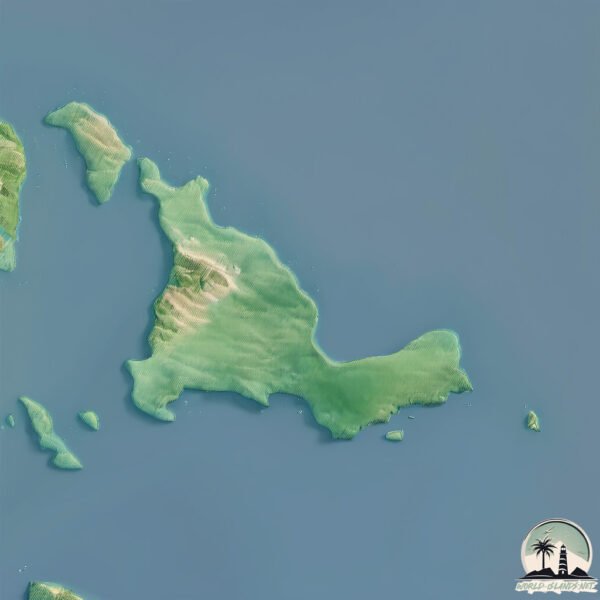Welcome to Palm , a Tropical island in the Coral Sea, part of the majestic Pacific Ocean. This guide offers a comprehensive overview of what makes Palm unique – from its geography and climate to its population, infrastructure, and beyond. Dive into the details:
Geography and size of Palm
Size: 56.7 km²Coastline: 55.7 kmOcean: Pacific OceanSea: Coral SeaContinent: Oceania
Palm is a Medium Island spanning 57 km² with a coastline of 56 km.
Archipel: –
Tectonic Plate: Australia – A major tectonic plate covering Australia, New Zealand, and parts of the Indian and Pacific Oceans, known for its relative stability and occasional seismic activity.
The geographic heart of the island is pinpointed at these coordinates:
Climate and weather of Palm
Climate Zone: TropicalClimate Details: Tropical Monsoon ClimateTemperature: Hot
Climate Characteristics: Characterized by heavy rainfall, high humidity, and uniformly high temperatures, but with a distinct short dry season. It features a seasonal reversal of prevailing wind directions.
Topography and nature of Palm
Timezone: UTC+10:00Timezone places: Australia/SydneyMax. Elevation: 435 m Mean Elevation: 165 mVegetation: Evergreen Broadleaf ForestTree Coverage: 76%
The mean elevation is 165 m. The highest elevation on the island reaches approximately 435 meters above sea level. The island is characterized by Hills: Gently sloping landforms with rounded tops, having a maximum elevation between 200 and 500 meters. Hills contribute to a varied landscape on islands.
Dominating Vegetation: Evergreen Broadleaf Forest
Vegetation: 6 vegetation zones – Very Highly Diverse Island
Infrastructure and Travelling to Palm
Does the island have a public airport? yes .
Does the island have a major port? no .
The mean population of Palm is 40 per km². Palm is Gently Populated. The island belongs to Australia .
Continuing your journey, Orpheus is the next notable island, situated merely km away.
Constructing Palm Jumeirah Dubai — Palm Island Dubai — Megastructure - Nakheel
Palm Jumeirah is the world's largest man-made island and is comprised of a two kilometre long trunk, a crown made up of 17 ...
Constructing Palm Jumeirah Dubai — Palm Island Dubai — Megastructure - Nakheel
Palm Jumeirah is the world's largest man-made island and is comprised ...
Palm Jumeirah is the world's largest man-made island and is comprised of a two kilometre long trunk, a crown made up of 17 ...
Inside Amazing Dubai Palm Island Jumeirah
The Palm Jumeirah is a manmade archipelago in Dubai, in the United ...
The Palm Jumeirah is a manmade archipelago in Dubai, in the United Arab Emirates, created using land reclamation by Nakheel, ...
Why Dubai’s Palm Islands are SINKING in 2025
The REAL reason why the Dubai Islands are SINKING, a $1e billion ...
The REAL reason why the Dubai Islands are SINKING, a $1e billion failure... Subscribe and click the bell to stay notified!
Australia is classified as Developed region: nonG7: Developed economies outside of the Group of Seven, characterized by high income and advanced economic structures. The level of income is High income: OECD.
News – Latest Updates and Headlines from Palm
Stay informed with the most recent news and important headlines from Palm. Here’s a roundup of the latest developments.
Loading...
Please note: The data used here has been primarily extracted from satellite readings. Deviations from exact values may occur, particularly regarding the height of elevations and population density. Land area and coastline measurements refer to average values at mean high tide.

